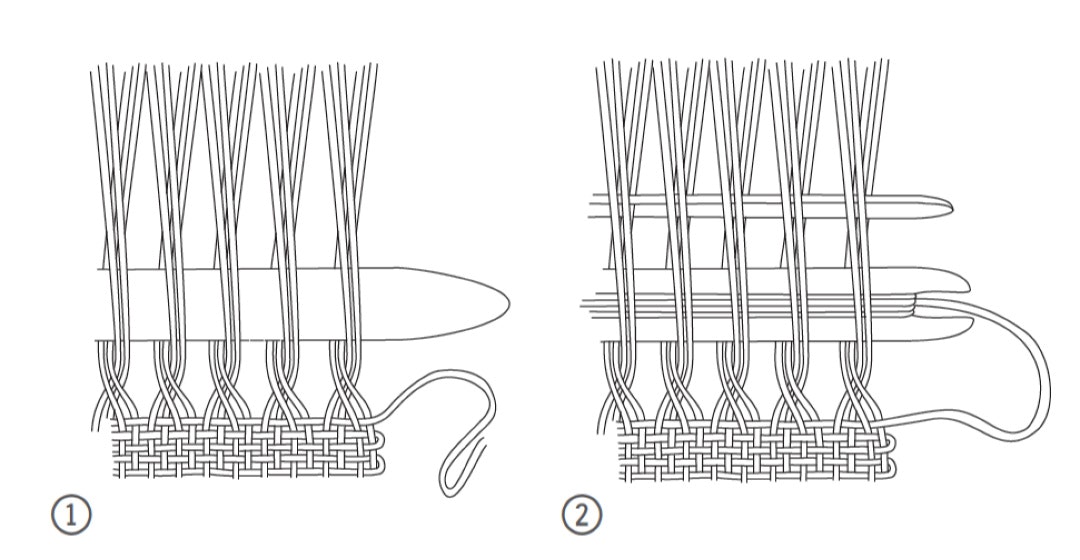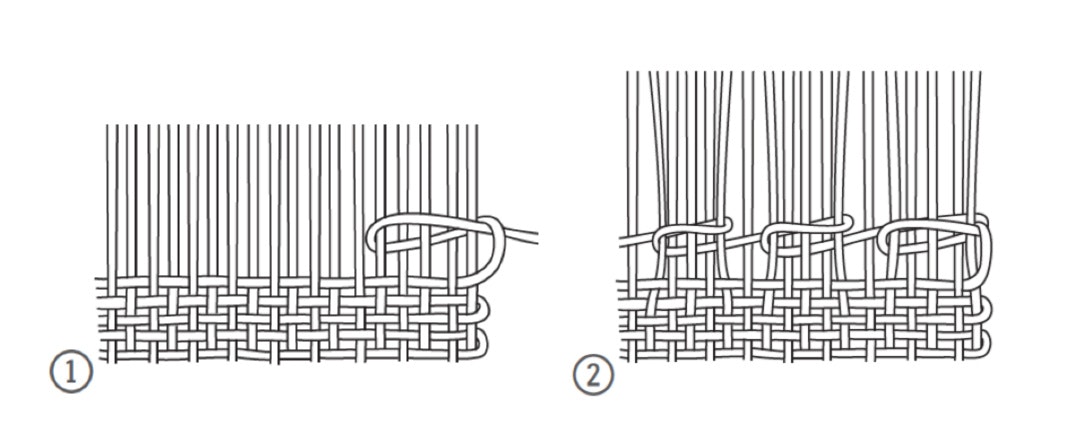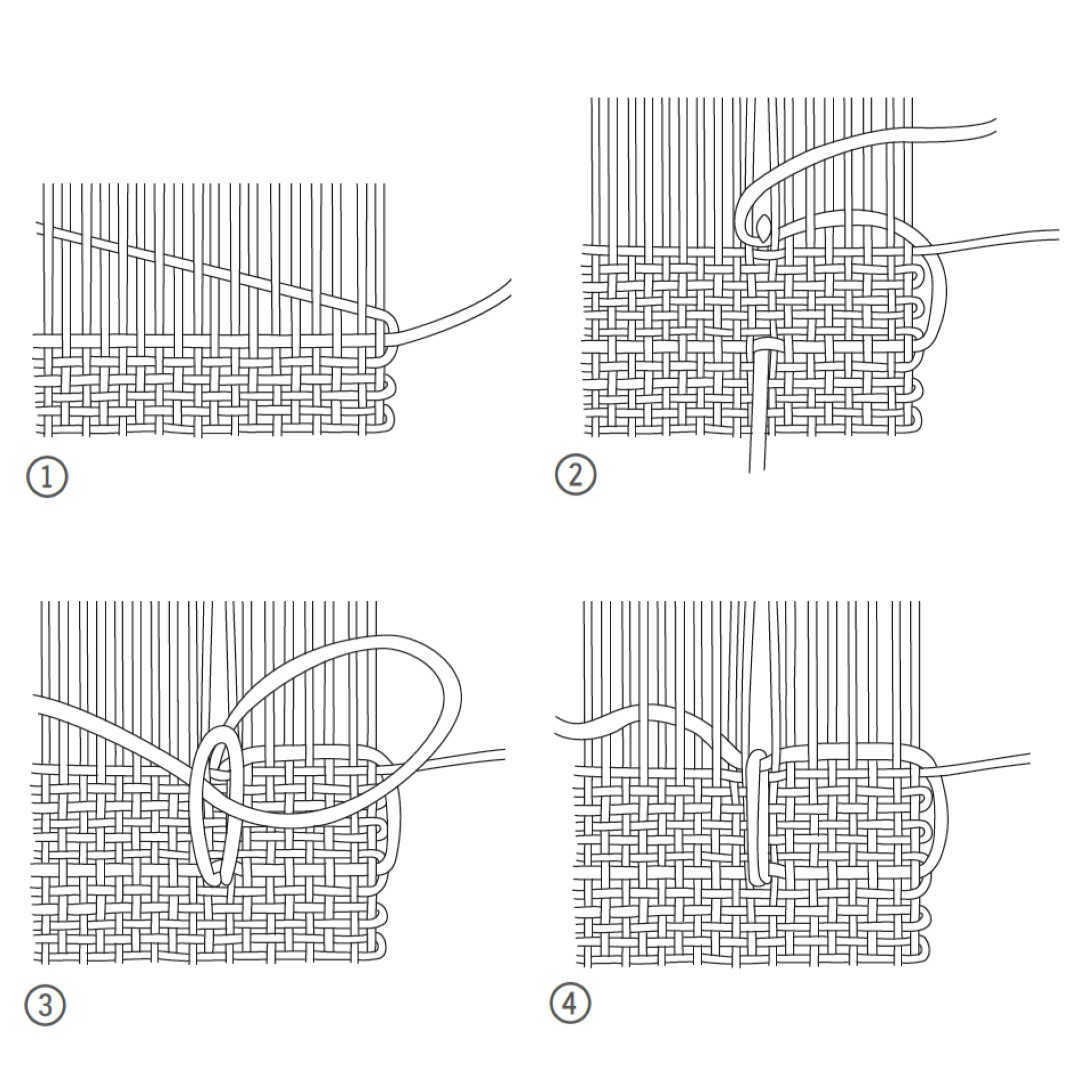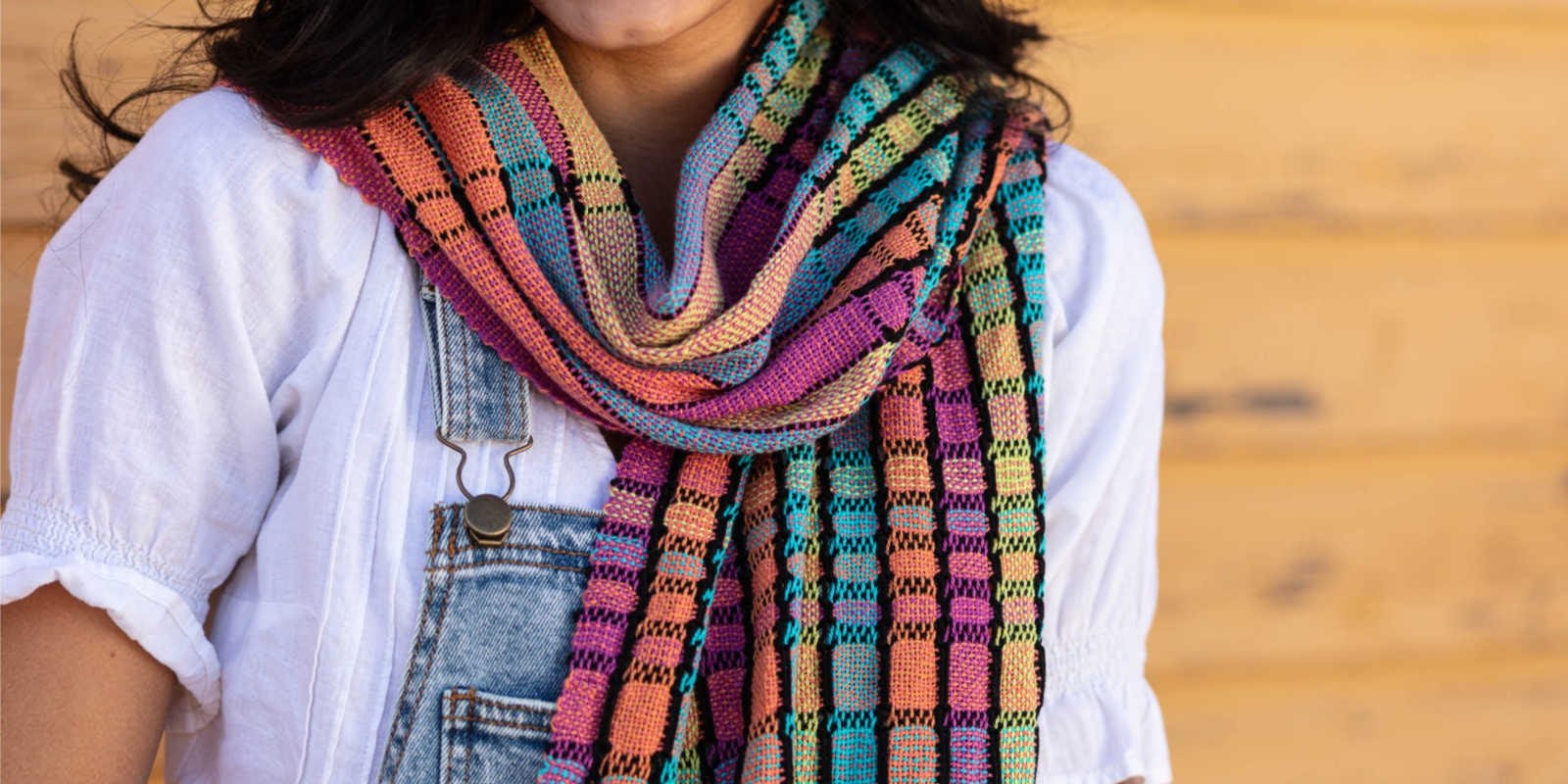There’s something so primal—so weaverly—about carefully twisting and bundling threads by hand to create visual interest in your weaving. Watching new patterns come alive as you move threads and lock them into place is an absolute joy. Just as important, these same techniques allow you to take your rigid-heddle weaving to new levels and go beyond plain weave. While there are countless hand-manipulation techniques out there, three of the most common are leno lace, Brooks bouquet, and Danish medallions.
Leno Lace
To create leno lace, the weaver twists warp ends around each other and holds them with a pick-up stick before locking them in place with a weft pick. Leno lace requires at least two warp ends twisted around each other and can be done with the twist going clockwise or counterclockwise.

Illustrations by Ann Swanson
- Choose a warp end (or set of ends) and twist it around the same number of adjoining warp ends either to the right or left, depending on the pattern directions. Slide in the pick-up stick to hold the twist in place. Continue twisting bundles and holding them along the width of the warp as directed by the pattern.
- After all the leno bundles are twisted, turn the pick-up stick on its side to create a shed. Insert a shuttle carrying the weft yarn through the shed. Remove the pick-up stick and beat. This will lock the twists in place.
Brooks Bouquet
With Brooks bouquet, you can create areas of lace by wrapping weft around warp ends in an open shed. Once the shed is closed, the bundles, also known as bouquets, sit on top of unwrapped warp ends. Typically, with Brooks bouquet, you have at least one warp end between each bundle.

- Open the shed. Put your weft yarn in the open shed and pass the shuttle under the number of ends required for each bundle. Bring the shuttle back through the top of the warp and wrap the first bundle of ends.
- Take the weft back into the shed under the wrapped ends and the next group of ends for the next bundle. Wrap the second bundle as in step 1. Repeat across the warp as indicated in the instructions. When all bundles are wrapped, weave one pick of plain weave and beat.
Danish Medallions
Create rounded areas of visual interest in your weaving with Danish medallions. This technique uses an outline yarn, typically one that’s thicker than the background weft, to enclose small areas of weft and tighten them into circular shapes. Danish medallions also typically require the aid of some sort of small hook—a crochet hook, a locker hook, or even a threading hook works for this purpose.

- Weave one pick of plain weave with the outline weft. Do not cut the outline weft after you’ve done so. Weave with the background weft the number of picks it takes to equal the desired height of one medallion, all the while carrying the outline weft along the selvedge but not catching it with the background weft picks.
- With the shed open, insert the outline weft through the shed under the number of ends required for the width of one medallion and bring the shuttle up and out of the warp at that spot. Insert a crochet hook through the warp under the first pick of outline yarn, pushing it through the woven cloth. Use the hook to grab the outline weft at the top of the medallion.
- Pull the outline weft back through the cloth to create a loop. Bring the shuttle of outline weft through the loop.
- Gently pull the outline weft to create the rounded edges of the medallion. Repeat across the width of the warp as indicated in the pattern.
Note: you can also do a variation on the Danish medallion without an outline weft. To find out information on that technique, check out this post.
If you've enjoyed these techniques, make sure to check out the Do it by Hand section in each issue of Easy Weaving with Little looms where you'll find detailed instructions and illustrations on how to do a wide variety of hand-manipulation, embellishment, and finishing techniques.
Happy Weaving! Christina

